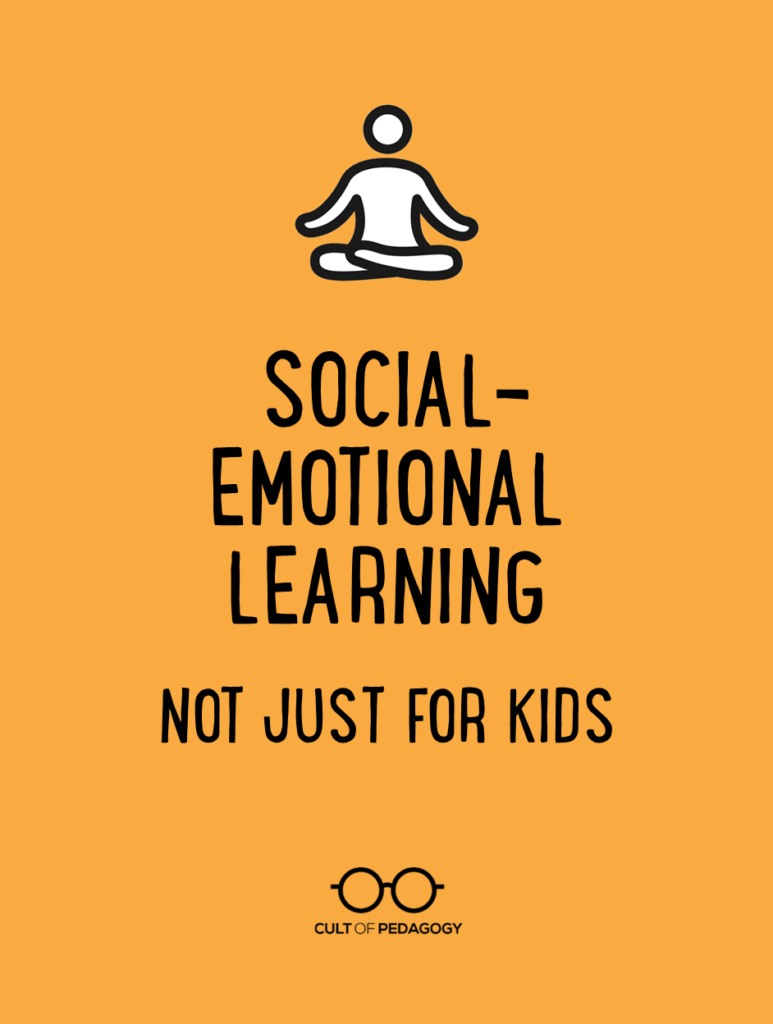
Listen to the interview with Wendy Turner:
Sponsored by World101 and Blue Apple
I will never forget the day when a red rubber bracelet was my most important accessory. After beginning our regular morning routine, I was confronted by an angry colleague in my classroom. We started to engage in a heated conversation—right in front of my students. I knew this was bad. I knew my students were watching, and I knew I had to get my social-emotional house in order, fast!
After a couple of minutes, we ended the conversation, but the issues were unresolved. When I shut the door, I didn’t go back to the morning meeting. I couldn’t, not the way my emotions were at that moment. I literally could not teach. So I walked over to a small basket that holds red, green, and yellow rubber bracelets. We all put one on every morning to share how we are feeling without words. I took off the green one I was wearing and put on a red one, while 20 pairs of student eyes bored into my soul. I simply told my students I needed to cool down, then went over to our breathing bucket—or cool-down area—and breathed deeply for several minutes while they continued.
I was then able to return to my students and my job in a much more productive emotional state. I modeled EXACTLY what I would want them to do in the same situation. I later realized that this moment was an incredible gift, a chance to show my students how to handle difficult emotions when they arise unexpectedly. It was my opportunity to model self-awareness and practice adult social-emotional learning.
Social-Emotional Learning: It’s everywhere in education today. From Twitter chats to professional development to team meetings, SEL is widely discussed, debated and embraced in different ways with lots of emotion (no pun intended). And rightly so, in my opinion: Social-emotional learning is the key to academic achievement; it is the fine art of being a successful human; and it is the ground floor of learning. I don’t believe any student can access and unlock their full academic potential without first accessing and unlocking their full social-emotional self.
So what is SEL exactly? CASEL, the Collaborative for Academic, Social, and Emotional Learning, defines SEL as “how children and adults learn to understand and manage emotions, set goals, show empathy for others, establish positive relationships, and make responsible decisions” with five competencies: self-awareness, self-management, social awareness, relationship skills, and responsible decision-making. The graphic below illustrates this nicely.
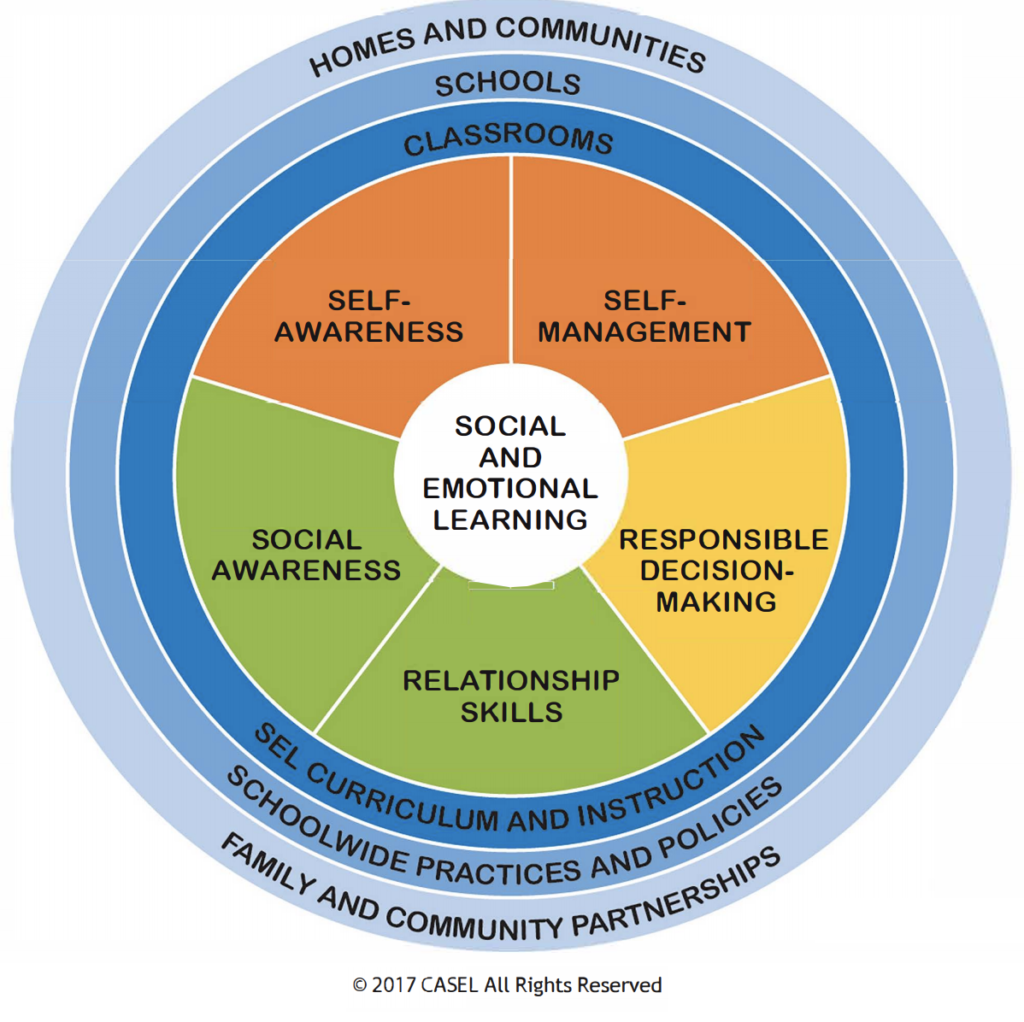
What is the most effective way to teach and develop these competencies? Many have concerns about building in the time to teach SEL as well as confusion over exactly how to do it. Do we need a curriculum binder with lessons? Do we need an SEL skills block? Maybe. But I think a better answer is right in front of us. The better answer is us and it starts with modeling the competencies we wish to see in our students every single day. It means looking deep inside ourselves and identifying what we are good at and what we need to work on, and engaging in that work right before our students’ eyes.
Doing this kind of work right in front of our students is not for the faint of heart, but doesn’t it make sense? How can we ask our students to have a growth mindset or use empathy and get along with peers if we don’t authentically do it ourselves? To truly germinate and grow, SEL concepts must be embedded in the walls of our classrooms as well as the fabric of our daily learning experiences. We lead by example, modeling both successful and challenging moments.
One good place to start is to look at each competency, get really, really honest about where we are with each of them, then find ways to model them to the best of our ability.
Competency 1: Self-Awareness
This is all about setting goals, knowing the strengths and weaknesses you possess, and cultivating a growth mindset. To model this for your students, share the goals you’re working on, your plans to get there, and the struggles you encounter along the way.
I am great at a lot of things, but I’m a really bad cook. Knowing this, I routinely try to make food with success to grow my confidence and show my students and my family that I can and will try. It doesn’t help that my husband is a fantastic cook.
Last year my classroom was connected with a class in Nigeria using a tech tool called Empatico, so we learned about Nigerian culture as part of the process. One really cool fact we found out was that they eat a bean cake called Akara for breakfast. My class immediately asked if we could try it. No problem, I said. Except that I had to cook it myself.
Frozen with fear, I went home determined to make this food for my students. Full disclosure: my husband does all of the cooking in my house. It turned out it was SO much work to soak and peel beans and then fry the cakes. They were not perfect, but I was able to make them. I took pictures and videos of the process and shared them with the class. When students tried them, they cheered for the Akara and for me. Deep waves of happiness invaded my soul. I had shared my fear with my kids, showed determination by coming up with a plan to do something new, and got it done. Then I shared the end product with people I care about: my students. They told me how proud they were of me. I will not forget that moment.
Over the years, I have shared training plans for running half marathons, being nervous about big presentations and speeches, and my lack of confidence in braiding my daughter’s hair. This helps students see me as human and also models my work on self-awareness and my ability to embrace new experiences. A few times a year I assign growth mindset homework where students pick a new skill to learn. Over a week they log their time on the new skill and their results. This allows them to practice what I have shown them.
Another big part of self-awareness is cultivating a positive outlook. I use reframing thoughts as a way to find something positive or good in whatever is difficult. Reframing doesn’t mean we diminish hard things or dismiss them. Instead, we look at them another way to see something as not quite so bad. Each week I share with my class something difficult I’m going through, and then I reframe it. For me right now, one of those difficulties is playing ping pong with my family. We have two teenagers. Everyone is really good at it and I suck. I have to work on my emotional regulation while I get crushed in the games regularly, sometimes mercilessly taunted by moody teenagers. So I keep playing to get better. I reframe the experience as time spent with my kids and active time and access my growth mindset around ping pong skills. It’s a win and I am getting better!
With my students, we go through community building circles where we look at a scenario and students offer ideas around reframing it. For students who struggle to positively reframe, they are still hearing ideas from others on how to do it as they develop this skill. As with any other skill, practice builds competence and I can see students get better at this throughout the year.
Competency 2: Self-Management
Self-management is our ability to manage our emotions, plain and simple. How do we keep our cool and recover when we lose it as we experience anger, frustration or nervousness in everyday situations? We model it.
Despite my best intentions, I do not stay calm and steady every moment in my classroom. This is normal, so I make a point to show my students how to navigate these sometimes difficult emotions. And when I need to, I apologize for my inability to stay regulated, especially if it results in yelling.
In the example I shared earlier, I had physical signs appear that indicated I was going to lose it! Heat crept up my body, my ears turned red and my cheek started to twitch, a classic sign that I was about to get really upset. When I changed my bracelet and went to cool off, I literally had to wait until my internal body temperature went down, I stopped shaking, and the red left my face.
It is really important to model recognizing the physical signs that your body is going into stress mode. Then, when we see the signs, we can think about what we need to do to avoid the meltdown. Dan Siegel, a clinical professor of psychiatry at the UCLA School of Medicine and the founding co-director of the Mindful Awareness Research Center at UCLA, uses a hand model of the brain to provide a concrete way to monitor this change. A closed fist represents a regulated emotional state while an open fist shows what happens when we become dysregulated. Learning to notice the signs is incredibly valuable so you can work to try to get back to a regulated state. This video does a good job of explaining this concept of the upstairs or learning brain vs. the downstairs or “lid-flipped” brain.
As a trainer for Kristin Souers and Pete Hall, the authors of Fostering Resilient Learners, I teach adults about this concept so we can bring it to our kids and help support proactive emotional regulation.
I’ll be honest. I was incredibly proud of how I handled myself that day in front of my students. It was a teachable moment. It was the curriculum of real life. It was not in the lesson plan, but we all know that some of the most incredible and valuable lessons are unscripted, unplanned, interrupting what we thought we would do. But we must see them, embrace them and love them for what they are: valuable life lessons and a chance to model SEL authentically.
Competency 3: Social Awareness
This competency is all about empathy and appreciating diversity, people and perspectives different from us. If we can find opportunities to model this for our students, they will in turn get better at it.
On the seventh day of my teaching career, one of my students lost his mom to cancer. I just went home and cried. I was terrified about how to support this student as well as the rest of his classmates. I teach 2nd grade, so fears about loss and parental separation are very powerful. While my student was out with his family, we held several class meetings to express our fears and talk about ways to be empathetic. When that student returned, my class got to see me using empathy as he came back to the routines of school.
A few years later, when a former student showed up in my room dressed in the same clothes for three days, exhausted from sleeping on a couch every night, I let him sleep in the back of the classroom so we could get to a place of learning. My students saw this and they got it, stepping over him to put away their coats and backpacks. When I see students in the hallway or at recess struggling, I ask how I can help them and what they need. I do this with teachers too, all of it in plain view of my students.
Recently, we had apples for a snack. The extras were quickly claimed but one boy asked for some more; I had to tell him they were all gone. Another student got out some scissors and cut his bag of apples in half to share with the boy. That was empathy in action. When we model empathy authentically, it starts to show up.
I have an empathy meter in my room the kids can use to gauge where we are as a group. There is a round magnet you can slide around on it. Every morning I put it into the center on the area that says “Focused on Yourself Only” and kids move it a little or a lot to one side throughout the day based on what they are feeling and seeing others say and do. For instance, if someone gets upset and cries during a partner or group activity and other students comfort him or her, someone will slide it toward the orange side. If someone is hurtful, it goes the other way.
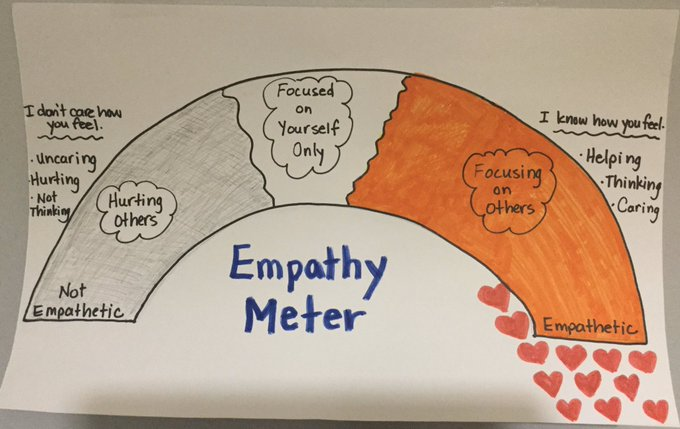
You can also make instructional choices that build this competency, like the partnership we have formed with the classroom in Nigeria. Diverse literature that supports empathy-building is another way to grow social awareness (try this social justice book list here).
Competency 4: Relationship Skills
This competency is based on our ability to get along with and forge connections with other human beings. CASEL tells us it includes cooperation, negotiating conflict and communication skills. Although it’s easy to hang with people who are just like you and share your opinions, I make a point to try to talk to and connect with as many people as possible in my school regularly. Our school community is huge with lots of very different people with diverse perspectives. I make sure my students see me engaging in positive and productive conversations with custodians, cafeteria staff, parents, tutors, other teachers, building mechanics, visitors from the district office and students from other grade levels and classrooms as often as possible.
When our custodian comes in to change the morning trash after we eat breakfast in the classroom, we say good morning to her and I ask her how her baby girl is doing instead of silently letting her slip in and out of our room, unseen every day. When team members plan field trips or special events for us, we all genuinely thank them. Last year we wrote and delivered letters of kindness to one of our Deans of Students after a rough patch, cementing the strong relationship we have with him and showing appreciation for everything he does every day. As we travel through the school and I come across students who I need to interact with, sometimes to compliment them, sometimes to redirect them, I always introduce myself to them first with a handshake and a smile. I compliment hair, shoes, and ideas all around me. We look for connections and then do nice things for people.
My earlier example about the teacher who barged into my room yelling is a great example of negotiating conflict successfully. The teacher and I recovered from this incident and continue as respectful colleagues. This is the work of developing strong relationships with the people around us. It’s the small everyday moments and gestures. It’s swallowing unhelpful remarks and snarky comments. It’s noticing and not judging. And it’s really, really hard. There is no magic to this work, rather a desire to engage in the continuous, sustained effort that yields personal and professional relationships that matter, work and last. And of course, we have to make sure our students see us do it daily. Relationship building is built on listening and connection. This article is one of the best I have seen about how to foster connection at all ages. And here’s a great video, made by kids, about how to listen well:
Another powerful way to support relationship skills is to engage in teamwork. When a group comes together around a project, particularly a service project or one that will benefit others, the rewards are incredible. People develop a sense of purpose as one larger unit and relish the good feelings that such a project can generate as they make a positive impact. This also strengthens our relationship with the community and the world at large.
I am a member of a team of global fellows who work to bring ideas to our students around building global competence and social good. I share this teamwork with my students and then work to create action with Team Turner (nickname for our class) in the same way. Some ideas to consider are setting up a school garden, supporting a local animal shelter, planning and executing a community event around helping the environment, and collecting items for those in need. In the past, we have convinced our district nutrition leader to change breakfast delivery from single-use plastic bags to reusable plastic caddies.
A great framework for projects like these is the United Nations Sustainable Development Goals. These goals outline 17 huge and important problems in the world; students can come together and act locally on any of these goals to make a positive impact. Another benefit? This work with a real-world connection and impact is highly engaging and can complement any core curriculum. Check out the graphic below and click here to learn more.
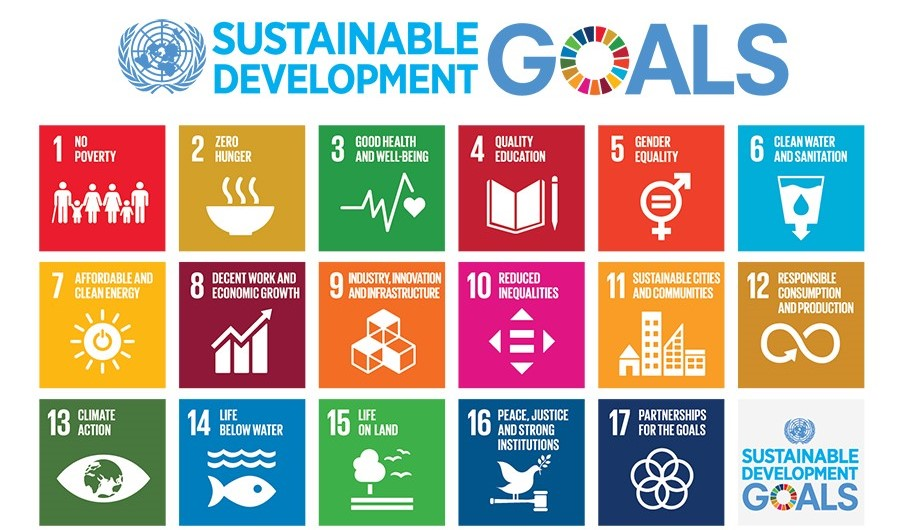
Competency 5: Responsible Decision Making
Growth in this competency centers on our ability to make good choices as we work to solve problems and navigate everyday challenges in our lives. The most powerful tool I possess to develop this competency and share it with others is my personal reflection.
About a year ago, I engaged in some really poor decision making that went against everything I stood for. I was unhelpful, rude, mean and negative when our admin team was asking teachers for help when faced with a substitute shortage. I had an opportunity to help and I blew it while others were stepping up to the plate. I violated the version of myself that I worked to put out there every day; someone who is positive, helpful and strong enough to do difficult things. When I analyzed the situation and looked back on my decision-making process, I realized I had not done one critical thing. I neglected to have empathy for our admin team. They were trying to solve a problem on a busy morning. I entertained only my perspective instead of that of others. I realized this looking back, not forward.
The key to developing this competency is creating the time and headspace in order to learn from past failures. It is really hard. I do this by getting up early and sitting quietly reflecting on the day before and the day ahead before speaking to another human, checking social media, or responding to an email. I am an early bird, so this works for me, but everyone can work to find that headspace in a place that works for them. The shower, the car, the kitchen, in a journal, or with music.
In the moment, we have to remember to ask a few questions as we get ready to act. Some are: What am I really trying to do? Is this helpful? Is this necessary? When you are working on longer team projects and have the luxury of planning and time we can add: Is this feasible? Is there a better way to do it? Is this morally sound, ethical, and safe? Building in questions at checkpoints and reflection after acting can aid in more responsible decision making. So often when we are impulsive, we later regret our actions. Building in that deliberate questioning to slow things down can help.
With kids, I use a protocol called “STOP. THINK. DECIDE.” for everyday moments and common problems. A simple visual in the classroom is a simple and helpful reminder. Holding weekly community-building circles where students share about a time they made a poor decision and how to do better next time works to keep these ideals front and center.
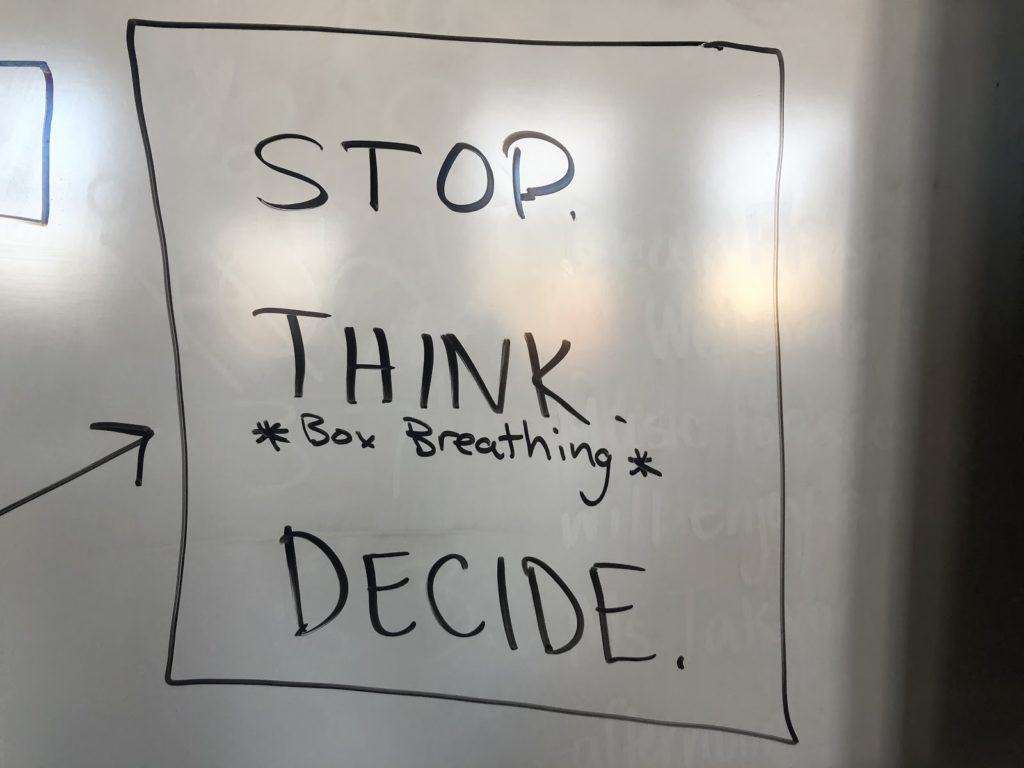
I truly believe the most powerful person in our classrooms to support SEL is us. It just is. Every year during the first week of school, I show my students a presentation called “How to Be a Great Human” (you can access it here). I know that there is absolutely no way I can expect my students to embrace the ideas in it without doing that in a very visible way myself.
One of my favorite quotes of all time is a well-known one from Haim Ginott, a child psychologist from Israel, long since passed away. He says “I’ve come to the frightening conclusion that I am the decisive element in the classroom. It’s my personal approach that creates the climate. It’s my daily mood that makes the weather.” We are the weather.
With great intention, focus, practice, and extremely hard work, we can create better weather in our classrooms when we pursue social-emotional excellence, embracing these competencies as real, raw, complete human beings, showing our students how to do so along the way. We don’t need binders of curriculum or hours in the day, rather the desire and ability to embed SEL into every nook and cranny of our classrooms by being authentically human, committing to doing better and sharing our work along the way.
Since writing this post, Wendy has published a book on this topic: Embracing Adult SEL. Click the links below this image to purchase in on Amazon or Bookshop.org. (Cult of Pedagogy is an affiliate for both of these sites; this means we get a small commission on purchases made through our links.)
Join our mailing list and get weekly tips, tools, and inspiration that will make your teaching more effective and fun. You’ll get access to our members-only library of free downloads, including 20 Ways to Cut Your Grading Time in Half, the e-booklet that has helped thousands of teachers save time on grading. Over 50,000 teachers have already joined—come on in.

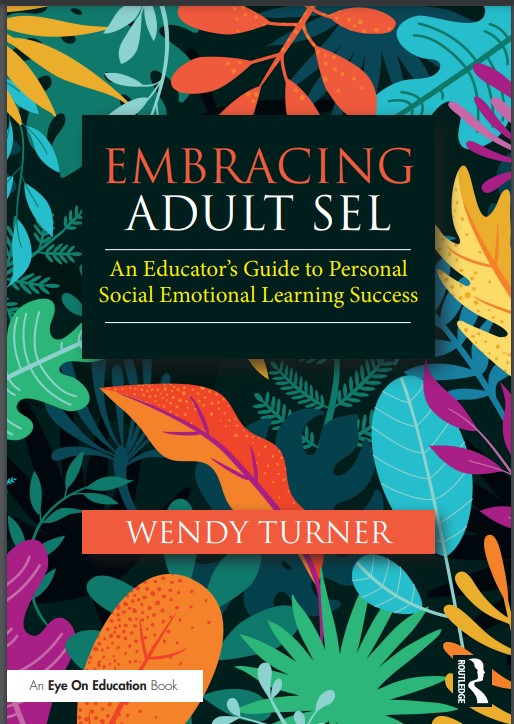
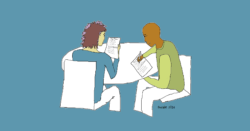
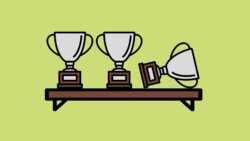
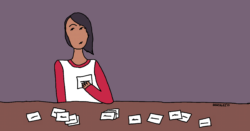

This is a tremendous post, and so freeing to me as a teacher. Our middle school has Advisory groups, and we often talk about SEL strategies. What a powerful tool we have, right at our fingertips, to simply model our own growth and processing. I created some SEL prompts for middle school students to answer (in my TPT store), but, upon reflection, perhaps the better approach is for me as a teacher to answer the prompts alongside my students.
Hi Olivia – Thank you for your kinds words and comment! I think it is a FANTASTIC idea to do the prompts you set up for your students yourself, then you can share your thinking and show them exactly what going through that process looks like. You will then also show your human side and create a stronger connection and bond between and among all of you. Bravo!
Hi Wendy! I work for an international education non-profit as an SEL Specialist, and I discovered your incredibly important post in working on a guidebook for our teachers, many of whom have requested SEL-specific strategies for their own self-care as well as their support of students in the time of COVID. I have designed the guide around the principle that teachers could mirror the exact SEL strategies they are using themselves with their students, so I was thrilled to discover that very premise in your post! I would love to hear more about the group of global fellows you mentioned in the post, so if you are open to emailing me to talk more, I’d be so grateful! Thank you so much for all you do and are 😊 Take care and stay safe!
Hi Allie,
Thanks for your comment! Please contact me if you’d like to discuss further. I’d love to connect.
With Kindness,
Wendy Turner
wendymturner@gmail.com
As a Director of Programs for AHA!, a non-profit that brings SEL to teens, families, and educators, I’ve read a LOT on this topic, and this is one of the best articles on SEL I’ve read! It’s engaging & packed with actionable info. I am curious about how the author is navigating the shift to online learning. Thank you!
Thanks so much, Melissa – this is great to hear! We’ll reach out to Wendy so she can get back to you.
Hi Melissa – Thank you so much for reading the post and for your kinds words! The jump to online learning has been an adventure. I work with a great team so we are planning together and making sure we incorporate community building and SEL checkins into our plans every day. We added a brain break movement activity this week. We have required reading and math activities for which we use some good online resources (Epic, Dreambox Math, Youcubed at Home, Math Mashup, Digital Readworks, John Spencer, and choice boards). We know families are under a lot of stress and pressure and that this is a crisis so we work to show lots of grace, encouragement, support and compassion through this. Overall I think we are doing a pretty good job. Please let me know if you have any questions or if I can support you in any way! Thank you again.
Thank you for this wonderful post and great resources. I have been using a SEL curriculum (binder, worksheets, videos) for the past 4 years, but the point has been driven home to me time and time again, “I must practice what I am preaching, or this is all pointless.” The Haim Ginott quote is one I return to time and time again. I do many of the things you mentioned in the article (weekly morning meetings, acknowledging all members of a school community, sharing physical reactions that my body is having when I am overcome with emotion) but there is always room for improvement. I loved your empathy meter, and could definitely do more to nurture that in my classroom. The video on how to be a good listener was spot on for my 4th graders, and I will look forward to showing it during the glorious time when we return to in-class learning. I also wanted to do a service project with my students this year but we are most likely remote learning for the rest of the year. Any thoughts for ways to incorporate service learning into remote learning?
Hi Julie – Thank you so much for your comments! You are no doubt doing great work in your classroom but you are right, we can always do more! I am glad the Empathy Meter is resonating with you. Regarding a service project, I would encourage students to brainstorm groups of people who may need helps and support right now and think about how to make a difference. This could be as simple as writing notes of thanks and appreciation to medical personnel, delivery workers, grocery store employees, etc. Or it could be collecting donations or making a contribution to a local church or food bank so they can support local residents in need. It could also be leaving a note or flowers for residents who live alone, the elderly, for example. Some kids are crafty and could make and distribute homemade masks to those who need them. Good luck and let me know if you need help or anything else! Be well and safe.
Thank you, Wendy! Those ideas are simple and just what I was looking for. Excited to share them with my class!
That is great to hear Julie, good luck!
Actually I’m a very insecure student and I barley talk to anyone. But today I learned a lot about being social.
I am glad to hear that Zarin. Thank you for reading the post.
Hi,
I’m wondering how to follow Wendy on Instagram or where to find more of these resources online or in a book. Thank you!
Hi Kelsey,
You can find Wendy’s social media contact information at the top of the post under her photo. I hope this helps!
Thank you for this! I was directed to this podcast by a PD session led by my teacher prep program. I switched from the non-profit world to teaching 2nd grade in my mid-30s :). So happy with the switch and I’m looking forward to trying these methods!
This is awesome to hear! Good luck and please reach out to share your experience or if you have questions. Can I ask what teacher preparation program you are a part of?
Thanks so much,
Wendy
Thanks for a meaningful post in difficult times.
Thank you Craige! I am so glad this resonated with you. Stay strong!
Wendy, Thank you so much for sharing this podcast. Can I purchase a copy of the Social and Emotional Learning wheel? I teach adult learners in the prison system. This really hits home with my students needs
Hi Rebecca – Thanks so much for listening and I am so glad the material resonated with you and is helpful!
Great news! Anyone can download the CASEL “wheel” with SEL competencies. Here is the link to do so: https://casel.org/what-is-sel/
Thank you for your work with adult learners in the prison system. We appreciate all that you do.
Be well. Thanks again,
Wendy
On self awareness: I’m not sure that always means we need to “fix” our weaknesses. Sometimes we can turn those into strengths, and adapt our work styles accordingly. As an example, I am a terrible organizer. A friend refers to my filing system as “FAS” – first available surface. I have tried to file things neatly away, but I just forget where they are; a filing cabinet is a black hole to me, and no amount of cognitive behavioral therapy is likely to change that. Frequently embarrassed, however, by not finding a key paper in my stacks while a student was waiting, I built myself what I call my “stacking cabinet,” a tall, thin cabinet with about 50 8-1/2×11 slots for stacks of paper. Now the stacks are easy to scan, sort and cull, and I can find things quickly. It works for me. I think it’s that way for a lot of things. If we find ourselves being impatient with students, for example, the solution is not always to learn to be more patient (though that’s helpful); maybe it’s to go for a walk, have an adult conversation or find some other way to renew.
Love the podcasts. Such great, caring ideas!
I read a very inspirational article by Wendy Turner: “Social-Emotional Learning: not just for kids”
I have been an educator for many years now and my experience has taught me that handling difficult emotions at the workplace and in front of others can be incredibly challenging. But we all must do it. And we must train ourselves to do it. We all have to learn how to manage our emotions. And it is very important that our students learn how to manage their emotions as well, inside the classroom and outside. Such knowledge is priceless.
I have been extremely fortunate because I teach a foreign language: French. Social Emotional Learning (SEL) is part of my teaching practice. I will share here a few of my thoughts.
1) Students learn all about empathy and how to appreciate diversity through the French and Francophone Civilization, customs, and traditions.
2) Students become more confident through reading activities.
3) Students work alone and in groups. They establish good and positive relationships through role plays and other activities. They learn to respect each other. They also learn to listen to each other.
Immensely interesting. Being retired now, as a civil servant in climate adaptation, i start learning new things, i never thought of.
This SEL seems extremely important to me on so many levels. Personally, in communal society, but also on national level.
Could SEL help in turning the dreadful trends in schoolshootings, in the USA , as well in Europe?
I wish you all the best! Greetings from Haarlem, the Netherlands.